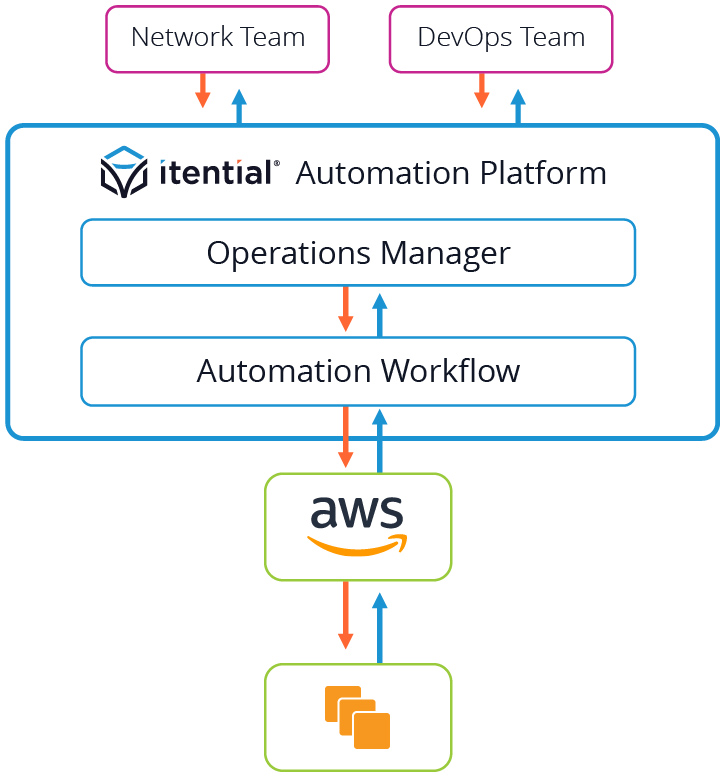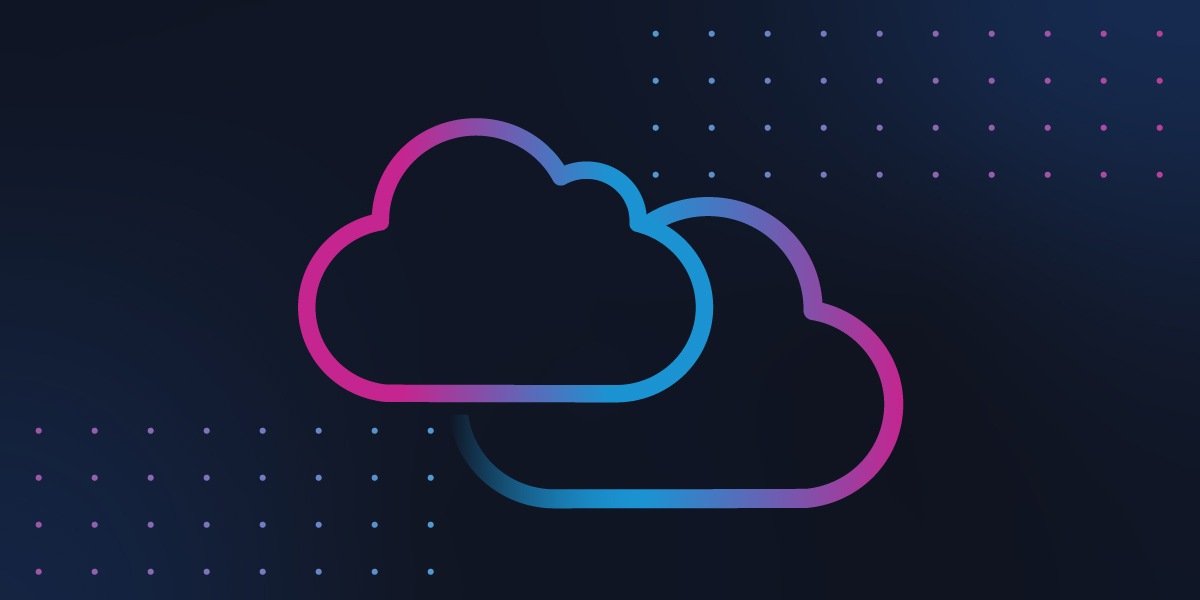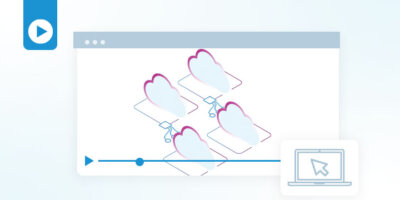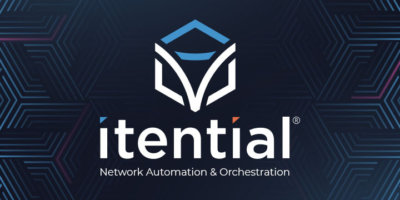For most organizations, cloud environments are as critical to IT infrastructure as on-premises networks.
Think about the applications you work with every day — they’re usually cloud-based, but they often have critical data center components. It’s becoming a top priority for network teams to automate cloud networking so that it’s integrated with traditional network automation.
The thing is, there’s a slight misconception I see come up for a lot of teams. People often believe a different set of automation tools is required for this new network domain. However, with the right solution, you can unify your approach and your tooling to automate seamlessly across both cloud and physical network infrastructure.
How to Build Cloud Infrastructure Automations
At Itential, I get to spend time with our customers almost every day, leading Automation Workshops to teach them how to automate specific, real-world use cases in their own environments. For one popular workshop, Provision VPC & EC2 Instance in AWS, I walk teams step-by-step through how to automate the creation of a new VPC and a new EC2 instance. Then we turn that into an end-to-end service that others can run. All in just under an hour and a half.
Since this is such a popular use case, I recently did a live demo (don’t worry, it’s just 15 minutes) showcasing an automated solution and how it works. I walked through some basics of cloud automation for any environment and then dove into the specifics of the AWS use case.
What I demoed:
- Utilizing Itential’s Pre-Built Library for rapid integration to AWS Cloud Platform.
- Building and testing Data Transformations to format data between API calls.
- Creating a workflow to provision a new VPC and EC2 instance in one end-to-end automation.
- Publishing and running the automation, using a JSON Form to capture user input.
Demo Architecture Overview: Users interact with Operations Manager, where they can trigger an automation workflow. The workflow then interacts with AWS in order to manage our VPC and EC2 instances.

Here’s what our demo workflow looks like:

Step 1 is a Data Transformation, which is Itential’s low-code solution for data manipulation. When you are automating across hybrid infrastructure, it’s important to be able to translate and format data for API calls. Here, we’re taking in the user input data captured by a JSON Form. Our EC2 instance requires an Image, Size, and Region, and the VPC requires a Name, Subnet IP, and Subnet CIDR Mask. The form will also include a section to add security group rules to control access —for a deeper dive on how the JSON Form captures data, skip to 09:19 in the demo here.
Step 2, ‘Create VPC with Networking,’ is a child job — another workflow used as a subtask. This job creates the VPC and all of the associated networking that we require for connectivity. For this demo, I leveraged an Itential Pre-Built, Create a VPC in AWS.
Step 3, ‘Build EC2 Creation Data,’ is another Data Transformation. This one takes in the results of the previous step, the VPC creation. It then formats that data for the next step.
That’s Step 4, ‘Create EC2 Instance.’ In the case of this demo, it was an Apache web server. This is a little more involved than the Create VPC Pre-Built, so here’s a look at the child workflow:

- The first step launches the EC2 instance. I let AWS assign an IP address, but you could also easily insert a step here that integrates with your IPAM system.
- Next, a Data Transformation builds the data to apply tags to the instance, followed by a step that applies those tags.
- The ‘Describe Instance Status’ task checks AWS to see if the instance is ready. The following transformation returns True or False, and the branching logic either moves the process forward or loops us back to check again after a delay step.
- Finally, when the instance is up, a ‘Describe Instance’ task returns the details, and a Query pulls the public IP address so it can be presented to the user.
Wrapping up the parent workflow: Step 5 is a Data Transformation, ‘Generate Completion Message,’ which takes in the EC2 instance information and builds a message. Then, finally, Step 6 simply pauses the automation and waits for a user to view the message before everything is marked as complete.
Then, to run the automation on the front end, a user goes into Operations Manager, Itential’s application for running and monitoring automations, and fills out the JSON Form. After the automation completes, they’ll be able to view the information they need for the VPC and the EC2 instance in a human-readable message.
How Itential Makes it Easy to Automate Across Hybrid Cloud
Itential is built to enable both cloud and traditional network automation with a wide range of capabilities. These three have the largest impact on the use case I’m discussing here:
- Pre-Built Integrations & Automations Library
- Data Transformations
- No-Code Workflow Builder & Orchestration
Pre-Builts
Itential’s Pre-Built Library contains over 200+ integrations and automations (many for the big 3 cloud providers) that simplify and accelerate deployments by helping teams integrate with external systems and plug reusable, ready-made tasks into more complex automations.
Data Transformations
When you’re orchestrating an automation workflow across hybrid infrastructure, the data that one system returns might not be what another system needs as an input. Itential enables you to format and translate data with confidence, leveraging JSON and presenting a drag-and-drop UI so that everyone can build Data Transformations.
Low-Code Orchestration
Itential’s low-code automation canvas enables you to build end-to-end network automations quickly and easily, across multi-vendor and hybrid, multi-cloud infrastructure. In this demo, I leveraged two child job workflows, and I was able to build an entire end-to-end automation from form input to message delivery.
Getting Hands-On: Learn How to Automate Cloud Infrastructure Yourself
It’s one thing to read a list of features, go through an automation step-by-step, or even to watch a demo. It’s another thing to get a firsthand look at the software, to actually build an automation yourself and see it run. That’s why we offer quick, accessible and free Automation Workshops for teams and individuals looking to get started with the Itential Automation Platform.
I run these Workshops almost every day, and what I’ve noticed is there’s always a moment when you can feel things click for those participating. It’s a collaborative experience where people get to build their first workflows and see things start to fit together. And that’s no different for this use case. I’ve seen signups for the VPC/EC2 Workshop go up and up as more people are recognizing the importance of cloud automation, and it’s always a valuable experience.
To bring cloud automation and physical network automation together, you need a platform that will integrate with all of your existing tools and systems to help you manage everything from a central location and deliver services end-to-end. With this kind of solution, you can continue to use the tools you use today, such as Terraform, Ansible, Python, etc., but you can also build integrations around them and turn a single-task automation into an end-to-end orchestrated process. That’s what Itential provides.
So if you’ve been thinking about cloud automation and want to know where to start, sign up for a free Automation Workshop today! You and your team can become cloud automation wizards by this time next week — what are you waiting for?
Tags: Cloud Networking Hybrid Cloud VPC





